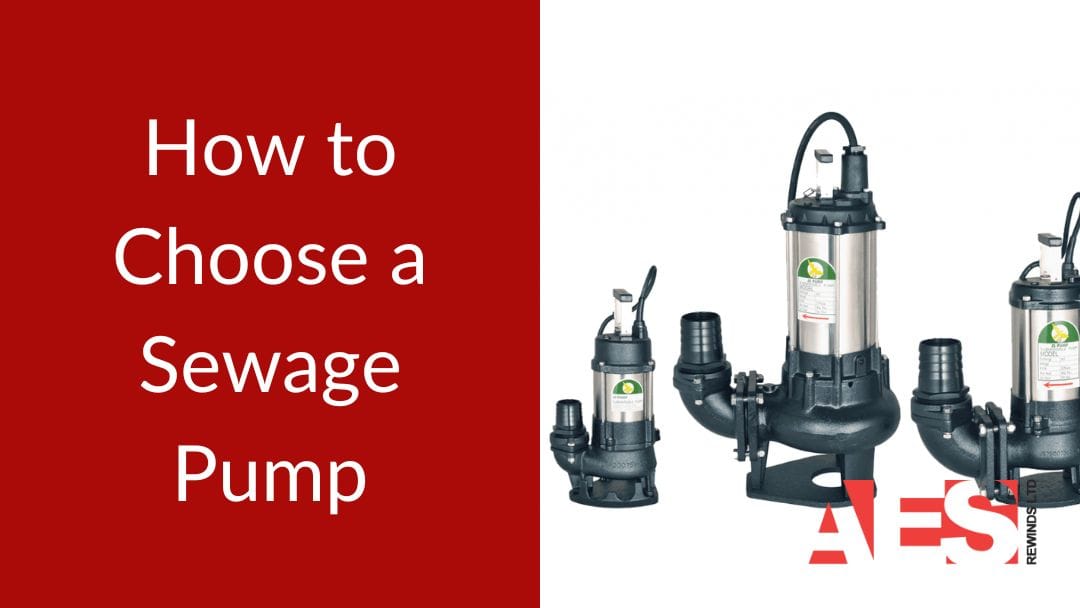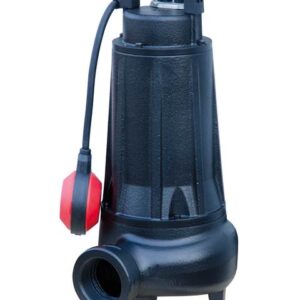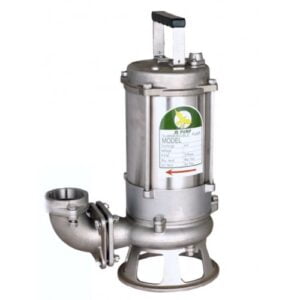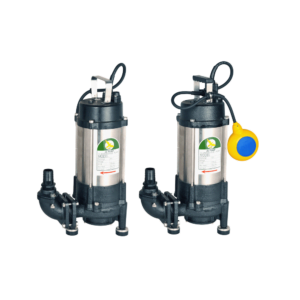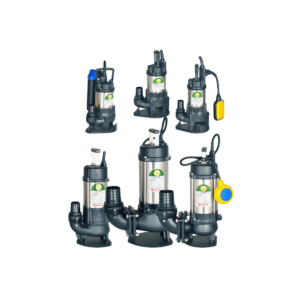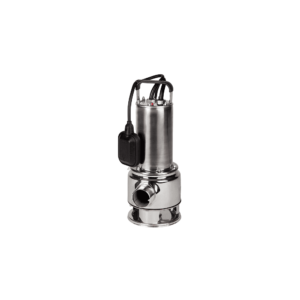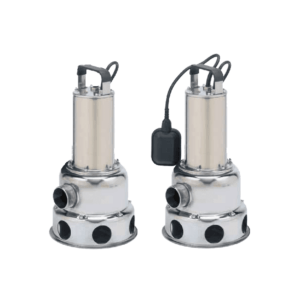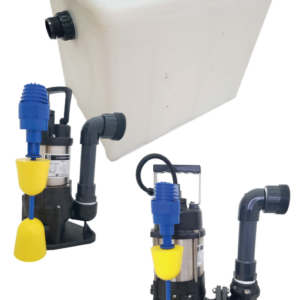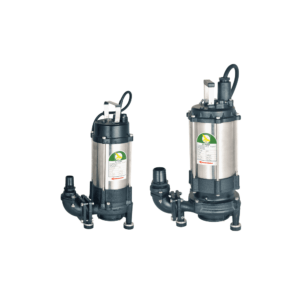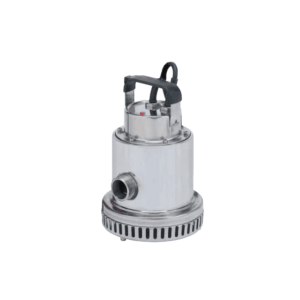If your property sits below main sewer level—whether it’s a Victorian basement in London, a new-build home in a flood-prone area, or a basement conversion—a reliable sewage pump isn’t just convenient, it’s absolutely essential. When that pump fails, you’re facing potential flooding, expensive repairs, insurance claims, and considerable disruption to your daily life.
This comprehensive guide explains exactly how to choose the right sewage pump for your UK property. We’ll cover calculating flow rates and head pressure requirements, comparing submersible, pedestal, and grinder pump types, deciding between single and twin pump systems, and ensuring your selection meets UK Building Regulations whilst keeping operating costs manageable. Whether you’re installing a new system or replacing an existing pump, you’ll have all the knowledge needed to make an informed decision.
Understanding Different Types of Sewage Pumps
When it comes to managing wastewater effectively, understanding the different types of sewage pumps available is your first step towards making the right choice. You’ll encounter three main categories: submersible pumps, pedestal pumps, and grinder pumps, each designed for specific waste handling needs.
Submersible pumps work quietly beneath the surface, submerged directly in your sewage pit. They’re compact, reliable, and perfect for residential or small commercial applications where space is limited.
Pedestal pumps sit above the pit, making maintenance easier but requiring more space. They’re typically used in larger commercial settings.
Grinder pumps are the heavy-duty option, featuring specialised impellers that shred solid waste into smaller pieces. This makes them ideal for pressurised sewer systems where sewage travels through narrow pipes.
Recommended products
Dreno Compatta Submersible Sewage Pumps
From £405.04JS & JST SK Sewage Cutter 316 Stainless Steel Submersible Pumps
From £922.28JS GS Grinder Sewage Submersible Pumps
From £627.47JS SV Sewage Pumps – Single Phase
From £224.26Pentair Biox Sewage Pumps
From £427.81Pentair Jung Nocchi Priox Sewage Pumps
From £362.26JS Box Domestic Pumping Stations
From £358.64JS GST Grinder Sewage Submersible Pumps
From £627.47Pentair Jung Drenox Stainless Steel Drainage Pumps
From £288.43
Determining Your Flow Rate and Head Pressure Requirements
After selecting the appropriate type of sewage pump for your property, you’ll need to calculate two critical specifications that determine whether your system will cope with UK household demands effectively.
Flow Rate Calculation Start by determining your required flow rate based on your property’s wastewater generation. For UK homes, calculate based on the number of bedrooms and typical occupancy patterns:
- Studio/1-bed: 100-150 litres per minute
- 2-3 bedroom home: 150-250 litres per minute
- 4+ bedroom property: 250-300 litres per minute
Consider peak usage periods (morning and evening rushes) and factor in appliances like washing machines and dishwashers that discharge simultaneously.
Head Pressure Requirements Calculate the total head by measuring:
- Vertical lift from the pump to the discharge point (typically to street level)
- Horizontal pipe runs (every 10 metres horizontal = 1 metre head)
- Pipe fittings and bends (each 90° bend adds approximately 0.3 metres)
Most UK residential applications require 5-15 metres of total head, though basement properties in areas like Edinburgh’s New Town or London’s garden squares may need significantly more.
Getting these calculations wrong creates serious problems—oversizing wastes energy and money, while undersizing leaves you with insufficient capacity during peak flows. For accuracy, especially in complex installations, consulting with a drainage engineer familiar with UK building standards ensures you’ll meet both performance requirements and Building Regulations Part H.
Assessing Your Wastewater Characteristics and Solids Content
Understanding what is actually flowing through your sewage system matters just as much as getting the flow rate and pressure calculations right. You’ll need to evaluate your wastewater’s solids content and particle size to select the right pump design. Different waste types require specific pump features to prevent clogs and guarantee reliable operation.
- Solid waste volume – Determine daily solids content based on occupancy and usage patterns. Older UK properties with traditional WCs may produce different waste profiles compared to modern low-flush systems.
- Particle size – Assess the largest particles your system must handle. Properties with older plumbing or unusual waste sources (food preparation areas, utility rooms) may require pumps with larger impeller clearances.
- Challenging materials – Identify potential problem materials like wet wipes (unfortunately common in UK sewage systems), sanitary products, or kitchen grease that might require specialised handling capabilities.
For properties dealing with raw sewage containing larger debris, solid-handling pumps are specifically designed to manage these demanding waste management tasks effectively.
Single Pump vs Twin Pump System Selection
This decision significantly impacts both your initial investment and long-term reliability, particularly important given UK weather patterns and seasonal demand variations.
Single Pump Systems Offer cost-effectiveness and simplicity, typically featuring an integral float switch that eliminates the need for a separate control panel. Single pumps work well for:
- Standard residential properties
- Lower-risk applications
- Budget-conscious installations
- Properties with alternative drainage options
However, pump failure leaves you without backup, potentially creating urgent situations that require emergency callouts—expensive in the UK market.
Twin Pump Systems Provide superior reliability by alternating operation between pumps, sharing wear and offering automatic backup if one fails. This gives you time to arrange repairs without emergency situations. Twin systems are recommended for:
- Properties entirely dependent on pumped drainage
- Commercial applications
- High-value or heritage properties where flooding damage would be costly
- Areas prone to power outages or extreme weather
Twin pump systems require a weatherproof control panel and professional commissioning to ensure proper operation, but they deliver higher flow rates and significantly reduce the risk of backup incidents that could affect property value or insurance cover.
Sizing Considerations for Residential vs Commercial Applications
WPump sizing requirements differ dramatically between residential and commercial applications in the UK market, and getting this decision wrong can lead to costly repairs, insurance complications, or Building Regulations compliance issues.
Residential Applications For UK homes, sizing should account for:
- Occupancy patterns – Calculate 150 litres per person daily, but consider peak usage periods
- Property type – Victorian terraces, modern apartments, and rural properties have different demands
- Appliance loads – Modern homes with multiple bathrooms, utility rooms, and high-efficiency appliances
- Power requirements – Typically 0.37 to 1.5 kW handles most UK residential needs
Commercial Applications
Business premises require more robust solutions:
- High-volume considerations – Restaurants, offices, and retail premises generate different waste streams
- Regulatory compliance – Must meet commercial building standards and environmental requirements
- Reliability demands – Business interruption costs make twin pump systems often essential
- Power requirements – Typically 2.2+ kW for adequate capacity and reliability
For specific applications like basement restaurants or below-ground retail spaces—common in UK city centres—consult with specialists familiar with local authority requirements and commercial building standards.
Energy Efficiency and Operating Cost Factors
With UK energy costs continuing to rise, your sewage pump’s efficiency directly impacts ongoing expenses, making this a critical factor that’s often underestimated during initial selection.
Energy-Efficient Features to Consider:
- Variable frequency drives (VFDs) – Adjust motor speed based on demand, potentially reducing energy consumption by 20-30%
- High-efficiency motors – Modern IE3-rated motors significantly outperform older designs
- Smart controls – Systems that optimise pump operation based on actual flow requirements
Sizing for Efficiency: Choose appropriate horsepower that matches your actual needs—oversized pumps waste energy unnecessarily. In UK conditions, this is particularly important given our variable household water usage patterns.
Long-term Cost Management: Regular maintenance including impeller cleaning, seal replacement, and electrical connection checks keeps your pump running efficiently. Factor in:
- Annual service costs (typically £150-300 for professional maintenance)
- Energy costs based on local electricity rates
- Potential water company charges for trade effluent (commercial applications)
Self-priming pumps offer additional operational advantages by eliminating the need for external priming systems, reducing both maintenance costs and energy consumption—particularly beneficial in UK installations where pumps may sit idle for extended periods.
Installation Requirements and Space Constraints
UK properties present unique installation challenges, from narrow Victorian cellars to modern basement conversions subject to strict planning and building regulations.
Essential Space Requirements:
- Clearance space – Minimum 600mm around pumps for maintenance access (recommended by UK drainage specialists)
- Distance from buildings – Position pump chambers minimum 1.5 metres from structures to prevent structural issues and odour problems
- Foundation requirements – Install on properly constructed concrete base with drainage, meeting Building Regulations requirements
UK-Specific Installation Considerations:
- Building Regulations Part H – Ensure compliance with drainage and waste disposal standards
- Planning permissions – Some installations may require planning approval, particularly in conservation areas
- Utility connections – Coordinate with local electricity networks for safe electrical supply
- Environmental compliance – Consider the Environment Agency requirements for discharge consents
Practical Installation Factors: UK properties often have limited access for equipment delivery and installation. Consider how components will reach installation points, particularly in basement applications or terraced properties with rear-only access.
Surface-mounted pumps offer advantages in retrofit situations as they’re installed above the liquid source and provide easier maintenance access—particularly valuable in UK properties where space constraints are common.
Maintenance Needs and Service Accessibility
Given the UK’s variable climate and the critical nature of sewage pumping in many properties, establishing a proper maintenance regime isn’t just recommended—it’s essential for preventing costly emergency situations.
Maintenance Accessibility Factors: When selecting your pump, prioritise systems that accommodate UK service requirements:
- Easy access routes – Consider how service engineers will reach your pump, particularly important in basement installations
- Component accessibility – Choose pumps with removable components and clear service points
- Tool requirements – Some models feature quick-disconnect fittings and tool-free access panels
Service Considerations:
- Professional services – Establish relationships with qualified drainage engineers familiar with your pump type
- Parts availability – Ensure replacement parts are readily available from UK suppliers
- Emergency support – Consider manufacturers or suppliers offering 24/7 emergency support
- Seasonal factors – Plan maintenance around UK weather patterns to avoid winter emergency situations
Recommended Maintenance Schedule:
- Quarterly checks – Visual inspection and alarm testing
- Annual service – Professional inspection, seal replacement, and performance testing
- Biennial overhaul – Complete system review, including electrical connections and control systems
Professional repair and refurbishment services can significantly extend your pump’s operational lifespan, particularly important given the investment required and potential property damage costs if systems fail.
Frequently Asked Questions
What Horsepower Sewage Pump Do I Need?
Most UK residential properties need 0.37-0.75 kW for standard applications. Larger homes (4+ bedrooms) or properties with significant head pressure may require 1.1-1.5 kW. Commercial or grinder applications typically need 2.2+ kW.
How to Choose a Sewage Pump?
Determine your specific application needs, calculate required flow rate based on occupancy, assess head pressure requirements, select appropriate pump design for your waste characteristics, ensure proper sizing for peak demand, and choose a reliable brand with good UK support.
What Size Sewage Pumping Station Do I Need?
Calculate based on your property’s inflow rate and occupancy. A typical 3-bedroom UK home requires a chamber capacity of 1,000-2,000 litres with flow rates of 150-250 litres per minute, though basement properties may need larger systems.
What Type of Pump Is Best for Sewage?
Submersible sewage pumps suit most UK applications due to their reliability and ability to handle solids. Choose grinder pumps for longer pipe runs or challenging waste streams, vortex pumps for fibrous materials, or twin-pump systems for critical applications.
Conclusion
Choosing the right sewage pump doesn’t have to overwhelm you when you focus on the essentials. You’ll make the best decision by accurately calculating your flow rate and head pressure, understanding your waste characteristics, and considering long-term operating costs. Don’t forget about maintenance accessibility and installation constraints. When you’re unsure about technical specifications, consult with wastewater professionals who can guide you towards the most efficient, reliable solution for your specific needs.
Expert Advice and Support
Need help choosing the right sewage pump for your application? The team at AES Rewinds brings decades of experience in sewage pumping solutions across the UK. Whether you’re uncertain about pump sizing, need advice on system design, or require professional installation and maintenance services, our experts are here to help.
Get in touch with AES Rewinds today for personalised advice on your sewage pumping requirements. Our knowledgeable team can guide you through the selection process, ensure compliance with UK Building Regulations, and provide ongoing support to keep your system running efficiently.
Contact us for expert consultation and discover why property owners across the UK trust AES Rewinds for their sewage pumping solutions.

